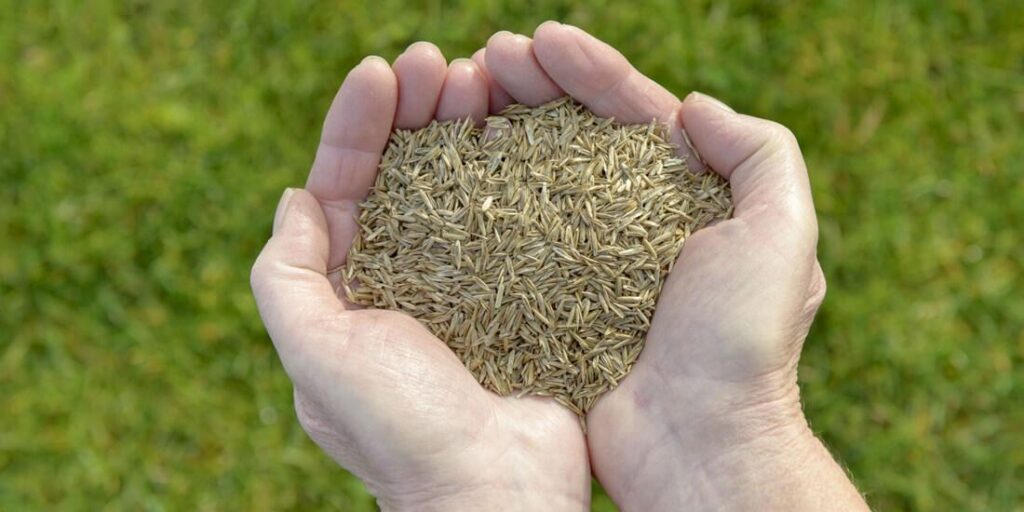Yes, you can use compost for overseeding your lawn, and it can be a valuable addition to the overseeding process. Compost provides several benefits when overseeding, helping to improve soil quality and enhance the success of new grass seed establishment. Here’s how to use compost for overseeding effectively:
Contents
Why Use Compost for Overseeding:
- Improved Soil Structure: Compost helps to loosen compacted soil and improve its structure. This is particularly important for overseeding, as it allows new grass roots to penetrate the soil more easily.
- Enhanced Nutrient Content: Compost contains a variety of essential nutrients, including nitrogen, phosphorus, and potassium, which are slowly released into the soil as the compost decomposes. This provides a natural source of nutrients for your new grass seedlings.
- Increased Organic Matter: Compost adds organic matter to the soil, which is beneficial for overall soil health. It enhances the soil’s ability to retain moisture, nutrients, and beneficial microorganisms.
- Weed Suppression: A layer of compost can help suppress weed growth by providing a barrier between the weed seeds and the soil surface, reducing competition with your new grass seedlings.
Steps to Use Compost for Overseeding:
- Prepare the Lawn: Before overseeding, mow your existing grass to a height of about 1.5 to 2 inches and remove any debris or thatch. It’s also a good idea to aerate the lawn to alleviate compaction and improve soil penetration.
- Calculate the Amount of Compost: Determine how much compost you need for the overseeding project by measuring the area to be overseeded. You’ll want to apply a layer of compost about 1/4 to 1/2 inch thick.
- Spread the Compost: Evenly spread the compost over the lawn at the recommended thickness. You can use a broadcast spreader or simply spread it by hand.
- Overseed: After spreading the compost, sow your grass seed evenly over the area, following the recommended seeding rate for your grass variety. If possible, choose a grass seed blend that matches your existing lawn.
- Rake and Water: Use a rake to gently incorporate the grass seed into the compost and soil. After overseeding, water the area thoroughly to help settle the compost, improve seed-to-soil contact, and initiate germination.
- Mulch and Protect: Consider applying a thin layer of straw or seed-free mulch over the overseeded area to help retain moisture and protect the seeds from birds or harsh sunlight.
- Watering Schedule: Keep the overseeded area consistently moist during the germination and establishment period. Ensure that the soil doesn’t dry out, but avoid overwatering.
Monitor and Maintenance:
- Regularly monitor the overseeded area for germination and growth. Be patient, as it may take a few weeks for the new grass to establish.
- Once the new grass is about 3 inches tall, you can gradually reduce the watering frequency, transitioning to a more typical lawn maintenance schedule.
Using compost for overseeding can significantly improve the chances of success by creating an optimal environment for new grass seedlings. It helps ensure that the seeds have access to essential nutrients, moisture, and a supportive soil structure, promoting healthy and robust lawn growth.


